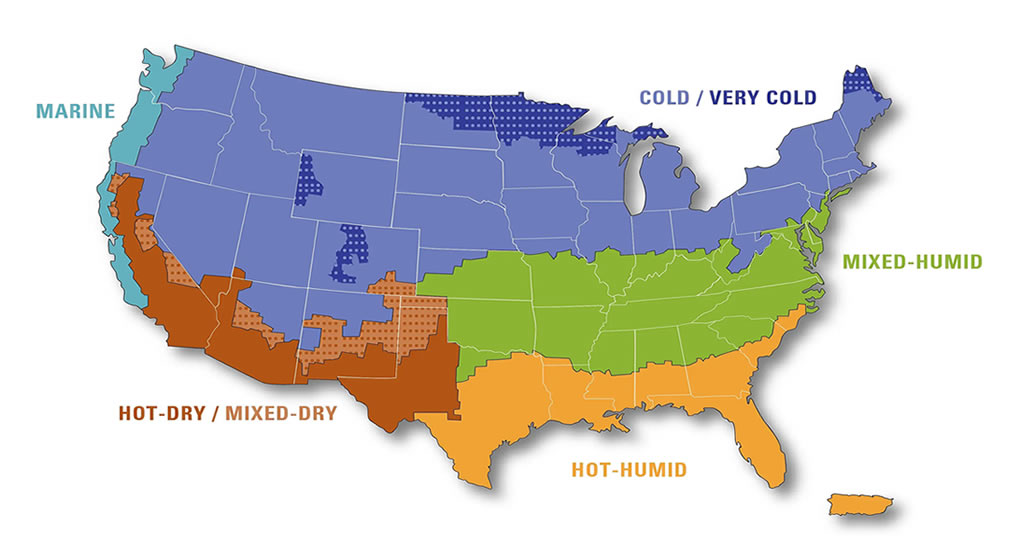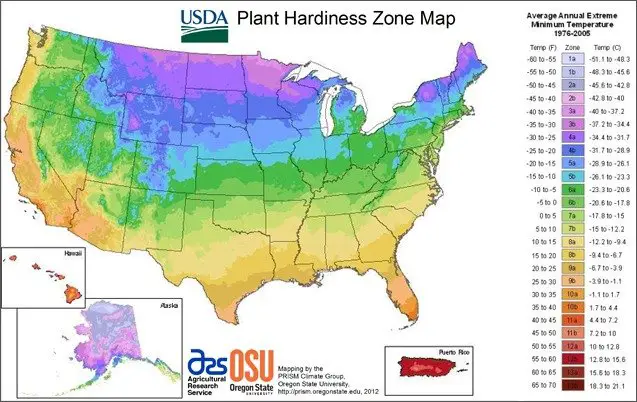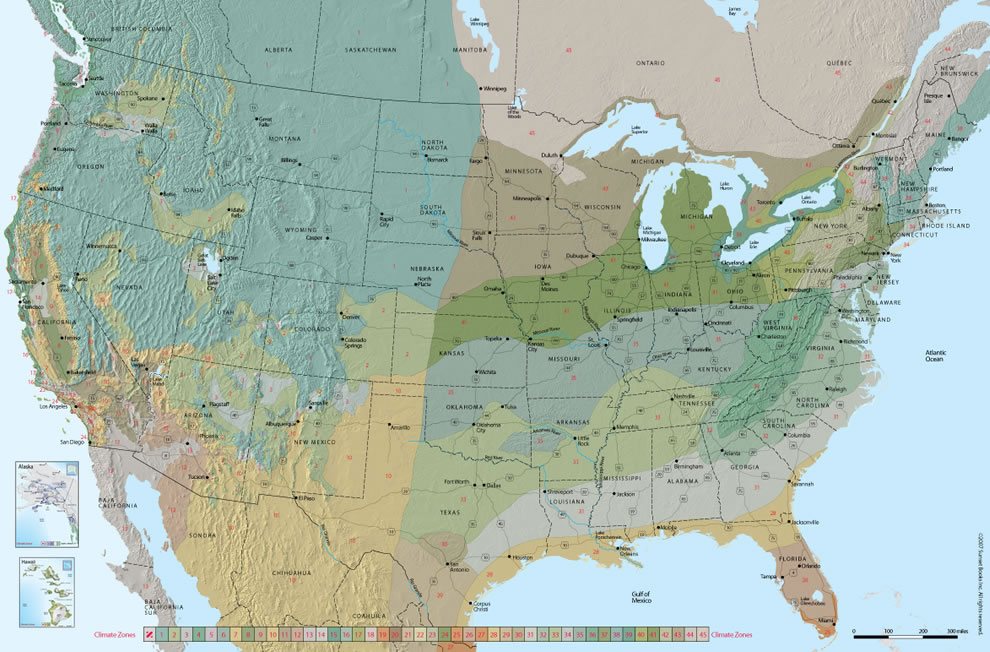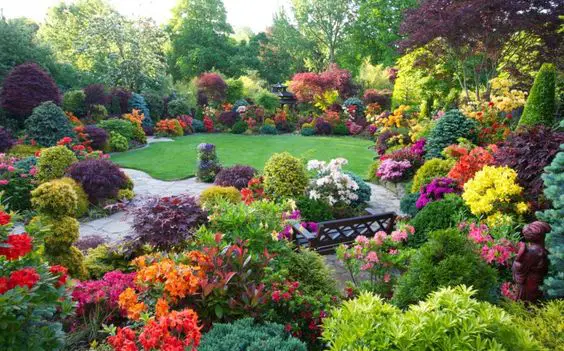Have you ever found yourself looking across the street at your neighbor’s yard and wondering how they did it? The lush green grass stretching back into a row of beautifully blooming flowers. Meanwhile, anything you plant struggles to get past the seedling stage and your lawn looks like beginner golfers were practicing teeing off on it.
Do they know something that you may have overlooked? They might just!
Table of Contents
- How To Use Your USDA Climate Zone To Create A Better Garden
- The USDA plant hardiness zone map can be your best gardening friend
- AHS (American Horticultural Society) plant heat zone map can also be helpful
- How to use climate maps for growing healthy vibrant plants
- Your lawn can also benefit from your knowledge of your climate zone
- Grass sowing secrets your neighbors may be keeping to themselves
- Lawn care is a lot easier when you garden for your climate zone
How To Use Your USDA Climate Zone To Create A Better Garden
So, before you plant another flower or spend another afternoon watering your lawn, you may want to take a look at a few climate zone maps.
These climate maps not only tell you what plants grow best in your area, but they are crucial (and often overlooked) steps to saving yourself time and money.
Plus it may not even require that much effort on your part.

For example, just because you need to change your current grass, it doesn’t mean you have to dig up your old grass.
More on that in a bit, but first, let’s take a look at the climate zones.
There are basically three different climate zone maps.
Each map gives you a unique look into what plants will thrive in your region.
If you are tired of struggling with half-dying plants, no matter how often you water or don’t water, or how often you feed them or prune them etc., then maybe its time to try something different.
Let’s first look at the different maps and see what they provide.
Helpful climate zone easy-to-read map
The USDA plant hardiness zone map can be your best gardening friend
This is an important map because it will tell you whether a plant can survive the winter in your region.
The boundaries of this map are set by the average annual minimum winter temperature.

What does this mean? Some plants can hibernate and become dormant in the winter while others will die.
By looking at your region on the map you can decide which plants can survive the winter.
AHS (American Horticultural Society) plant heat zone map can also be helpful
The AHS heat may of America map is the opposite of the one above but just as informative.

Instead of calculating the cold days, the AHS map takes into account how many days your region will experience temperatures above 86℉ (degrees Fahrenheit).
Why is 86℉ degrees Fahrenheit an important temperature?
This is when a lot if plants start to feel stress because of the heat.
If you live in an area that has a lot days that reach over this boundary, then you may want to consider choosing flowers that perform well in a hot and dry environment.

While the previous two maps look at temperature alone, this map will give you an overall picture of your current climate condition.
Things such as elevation, ocean influence, and mountains are taken into account with temperature to access which plants will grow best in your region.
While this map was originally developed for use in only thirteen states, it has expanding and is now a useful alternative to the other maps found above.
How to use climate maps for growing healthy vibrant plants
You should use the information that you gathered from the above maps as your starting point.
The important thing to remember is that even if a plant can survive in your climate, it doesn’t mean you should plant it.
What’s the point of planting flowers if they never bloom? You want to find a plant that will not survive, but one that will thrive in your current climate zone.
Your lawn can also benefit from your knowledge of your climate zone
Your lawn is the first impression that you give to any visitor of your property. You want that first impression to be great.
Who doesn’t?
So, you want to have a nice green lawn with as little water as possible.

By using the climate zone maps, you can figure which grass would work best in your region.
The key is to work with nature, not against it.
If you live in a hot dry area, then you will want to choose a grass that will thrive even if you don’t water it everyday.
Grass sowing secrets your neighbors may be keeping to themselves
Planting new grass doesn’t require you to dig up all your old grass.
If you find that your current grass needs to go for one that would be better suited for your climate zone, then there are a few steps you can take.
 If you want to plant a different type of grass, then you can use a method known as overseeding.
If you want to plant a different type of grass, then you can use a method known as overseeding.
At the most basic level of overseeding, you can spread the new grass seeds over the top of your old grass.
The idea is that your new grass will become dominate and thrive in the ideal situation (since you used the map and know which grass is best suited to your zone). This process should happen naturally.
The two grasses could also help accent each others as well. One may stay green when its dry while the other is green when the weather is cooler.
If you want to take this process a step further, you can dethatch and the aerate your lawn before spreading the seed.
You can use a mechanical dethatcher or you may even opt to use a metal garden rake.
Your goal is to remove the top level of soil to give the new seeds a better chance to take root.
If you are very committed, then you could aerate your soil before spreading the seed as well.
Aerating your soil will break it up and allow for the new seed to grow stronger deeper roots.
If you follow all of these steps, then a green lawn is just a few ‘waterings’ away.
Unless you have very challenging lawn environment with bad soil ad very extreme weather we strongly urge you to go with overseeding as it almost always gives the best results.
Lawn care is a lot easier when you garden for your climate zone
Once you find the right grass for your lawn, you will want to consider different topsoil options as well.
Let’s say you live in a hot dry climate with little or no rainfall.
Then rather than sourcing your top soil from your local area you may want to choose a topsoil that retains moisture for a long time.
Such a little adjustment can make a big difference in the way your lawn grows and looks.
By utilizing the information from your climate zone, you can have a healthy natural green lawn in no time.
Its important to remember that what you choose to do to your lawn or garden not only provides aesthetic value, but could very well change the value of your home.

If you have ever walked onto a property with a nicely manicured lawn and a beautiful flower garden you will know what I mean.
It’s sometimes difficult to slow down and do some research when we get these ideas for home improvement; most of us just want to get started.
But, remember to check your climate zone before you start your next project.
It’s something that may not only save you time, but may end up saving you a few dollars as well as adding lots of dollars onto the resale price of your house.

